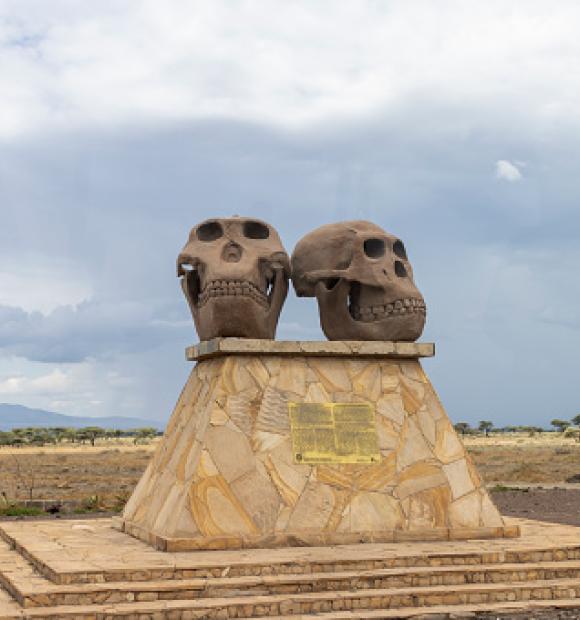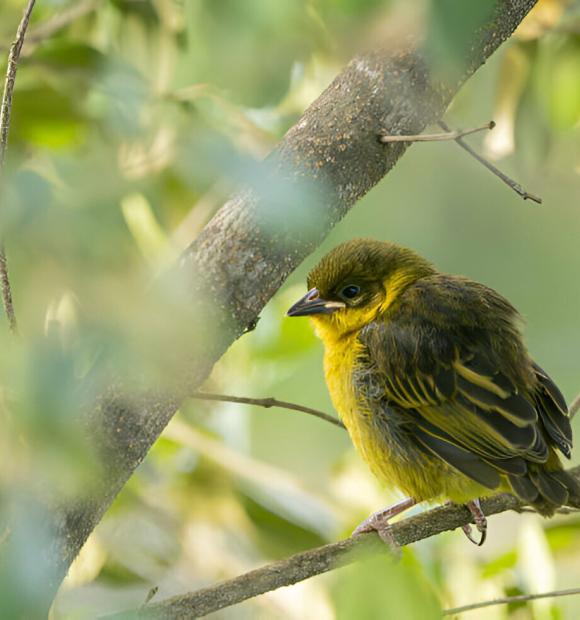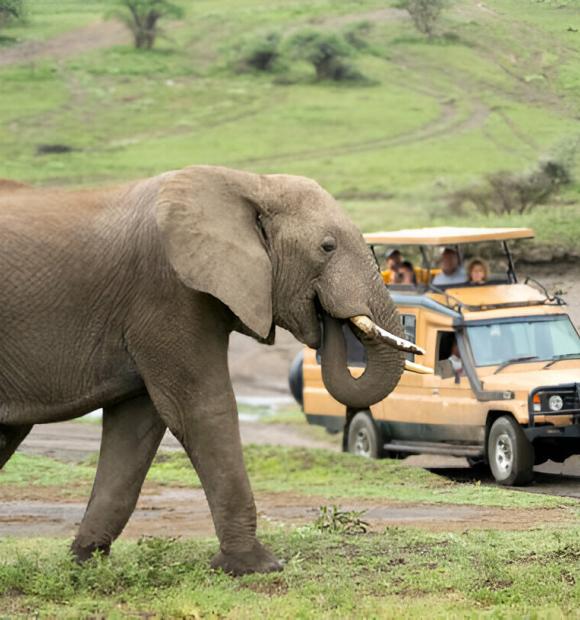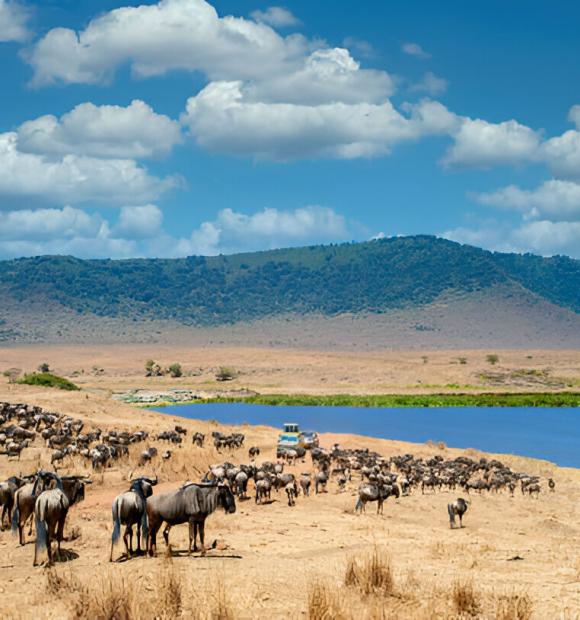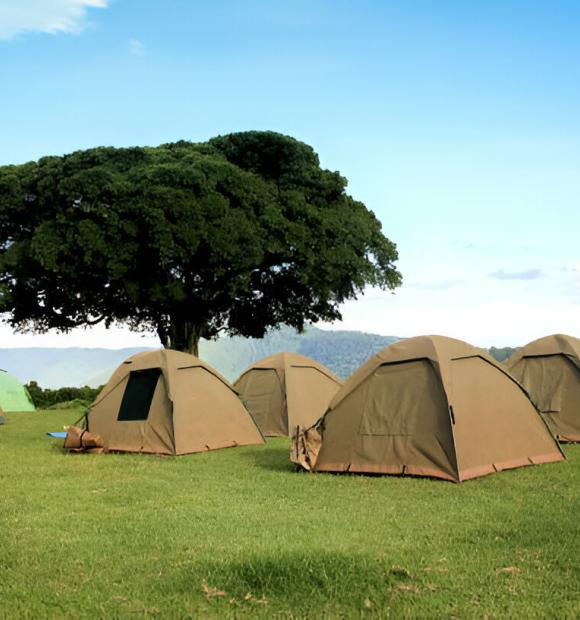Ngorongoro Crater
Ngorongoro is a stunning natural wonder located in the northern part of Tanzania, in East Africa. The main attraction in the area is the Ngorongoro Crater, which was formed millions of years ago when a massive volcano erupted and then collapsed. Today, the crater is a vast, bowl-shaped valley that is 2,000 feet (610 meters) deep and covers about 260 square kilometers. It’s often called the "Garden of Eden" because of its beauty and the abundance of wildlife that lives there.
Inside the crater, there is a variety of animals, including the "Big Five" (lion, leopard, elephant, buffalo, and rhino). The lush grasslands and water sources make it an ideal place for wildlife to thrive. In fact, it’s one of the best places in the world to see a high concentration of animals in such a small area.
Aside from the wildlife, the Ngorongoro Conservation Area is home to the Maasai people. These semi-nomadic herders have lived in the region for hundreds of years, maintaining their traditional lifestyle and culture. They live alongside the animals, following the rhythms of nature and their cattle, which are central to their lives.
Ngorongoro is often part of the famous "Northern Safari Circuit" in Tanzania, along with places like the Serengeti National Park and Lake Manyara. If you love nature, wildlife, and culture, it’s a must-visit destination.
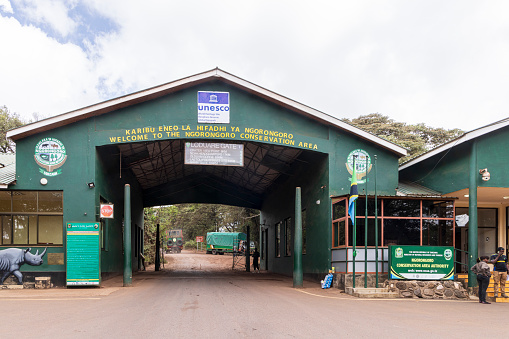
Quick Facts about the Ngorongoro🌿🦁
📍 Location: Northern Tanzania, East Africa
🌍 Size: Ngorongoro Conservation Area covers about 8,000 square miles (21,000 square kilometers)
🐾 Famous for: Ngorongoro Crater, one of the world's largest unbroken volcanic calderas
🦁 Wildlife: Home to the Big Five — lion, elephant, leopard, buffalo, and rhino
🦓 Other animals: Giraffes, cheetahs, hyenas, hippos, flamingos, and over 500 bird species
🕰️ History: A natural wonder and one of the oldest and most intact ecosystems on Earth
🛡️ Protection: UNESCO World Heritage Site and Ngorongoro Conservation Area
🎈 Activities: Safari drives, cultural Maasai village visits, wildlife photography, hiking
🧩 Meaning of the name: "Ngorongoro" is believed to come from the Maasai language, meaning "the place of the sacred voice"
History of the Ngorongoro
Ngorongoro has a deep and interesting history that goes back millions of years. The Ngorongoro Crater was formed around 2 million years ago after a huge volcanic eruption. The eruption caused the land to collapse, forming the large, bowl-shaped crater that we see today. Over time, this area became a home for many animals and plants, creating a beautiful and diverse environment.
For centuries, the Maasai people have lived in the region. They are semi-nomadic herders who depend on cattle for their livelihood. The Maasai have a strong connection to the land, and their way of life has shaped the area over time. They live alongside the wildlife, which includes animals like lions, elephants, and rhinos, and they play an important role in keeping the balance between humans and nature.
In the 1950s, the government of Tanzania set up the Ngorongoro Conservation Area to protect both the land and the people. The goal was to allow the Maasai to continue living in the area while also preserving the natural beauty and wildlife of the region. This helped ensure that Ngorongoro remained a special place for both people and animals.
Today, Ngorongoro is famous for its incredible views and large populations of wildlife. The Ngorongoro Crater is one of the best places to see animals like lions, elephants, and rhinos all in one place. It is also home to many unique plants and birds. The area continues to be a symbol of how humans and nature can live together in harmony.
Accessing Ngorongoro
Accessing Ngorongoro is quite easy, especially if you are already in northern Tanzania. Most visitors start their journey from the town of Arusha, which is the main gateway to Ngorongoro. Arusha has both an international airport and a smaller domestic airport.
From Arusha, you can reach Ngorongoro by road. The drive takes about 3.5 to 4 hours. Many people travel in safari vehicles, usually as part of a tour package, which makes the trip comfortable and safe.
There are also airstrips near Ngorongoro, such as the Lake Manyara Airstrip, for those who prefer to fly from Arusha or other parts of Tanzania. From the airstrip, it’s a short drive to the crater.
Most visitors enter Ngorongoro through the Loduare Gate, which is the main entrance. From there, you can enjoy guided game drives and explore the beauty of the crater and its surroundings.
Why is the Ngorongoro Special?
Ngorongoro is special because it is one of the best places in the world to see many wild animals in one area. The Ngorongoro Crater is like a natural home for animals such as lions, elephants, rhinos, buffaloes, and many more. Since the crater has water, grass, and shelter, animals stay there all year round. It is also special because of its beautiful views. The high crater walls and green landscape make it a very beautiful place to visit.
Another reason is the people. The Maasai people live in the area with their cattle, and they have kept their traditional way of life for many years. Visitors can learn about their culture and how they live close to the wild animals.
Ngorongoro is a place where you can enjoy nature, see amazing wildlife, and learn about local culture — all in one visit!
Wildlife in Ngorongoro
Ngorongoro Conservation Area is home to a wide range of wildlife due to its diverse habitats. Some of the key species include:
- Big Five: Lions, elephants, leopards, buffalo, and rhinos are found in the area, with a high concentration in the Ngorongoro Crater.
- Other Mammals: Wildebeest, zebras, gazelles, cheetahs, hyenas, and giraffes roam the plains and forests.
- Birds Over 500 species, including flamingos, ostriches, vultures, and various raptors, can be spotted in the area.
- Reptiles & Amphibians: Crocodiles in lakes and various species of lizards and frogs are present
🌾 Grasslands
The grasslands in Ngorongoro are large, open spaces covered with soft green grass. These fields are like a buffet for plant-eating animals such as zebras, wildebeests, buffaloes, and gazelles. They spend their days munching on the fresh grass. After the rains, the land becomes even greener, and animals gather in huge numbers to enjoy the new growth. Predators like lions and cheetahs also live here, hiding in the tall grass, waiting for the perfect moment to chase their prey. This lively area is always full of movement and excitement, with herds crossing the land and hunters following close behind.
🌳 Forests
Thick forests grow along the slopes of the Ngorongoro Crater. These forests are cool and shady, making them a perfect home for many animals. Elephants wander through the trees, pulling down branches and stripping bark with their trunks. Monkeys and baboons leap through the branches, searching for fruits, seeds, and tasty insects. Leopards, the shy cats of the forest, rest in the trees and watch quietly for small animals passing below. The trees in these forests are not just homes — they also hold the soil together, preventing the earth from washing away when it rains.
💧 Lakes and Rivers
Water is life in Ngorongoro, and Lake Magadi is one of its most famous spots. This salty lake sits right inside the crater and shines under the sun. Large flocks of pink flamingos gather here, feeding on tiny creatures in the water. Hippos wallow in the cool lakes and rivers, keeping their skin safe from the hot sun. Freshwater streams and springs flow through the area, offering drinking water to all kinds of animals. Birds like kingfishers perch near the water, watching closely before diving to catch fish. These wet places attract many creatures, making them busy, lively spots.
🦓 Plains and Hills Outside the Crater
Beyond the crater, the land opens up into wide plains and gentle hills. Giraffes walk gracefully through these areas, using their long necks to reach the leaves of tall trees. These taller trees grow better outside the crater, making it an ideal place for giraffes. Lions, cheetahs, and hyenas also roam here, always alert for a chance to hunt. During the dry season, animals travel across these plains in search of fresh grass and water, turning the land into busy highways of wildlife movement.
🦅 Bird Areas
Ngorongoro is a paradise for birds, with over 500 different kinds living here! At the lake, pink flamingos create beautiful scenes, while high in the sky, eagles and vultures glide in search of food. On the ground, ostriches run swiftly across the plains, and small, colorful birds like weavers weave clever nests that hang from tree branches. Whether in the forests, near the water, or out in the open plains, birds fill the air with their songs and colors, adding life to every part of Ngorongoro.
🐜 Insects and Plants
Even the smallest creatures play a big part in Ngorongoro. Bees and butterflies move from flower to flower, spreading pollen and helping plants grow. Termites break down dead plants and fallen wood, turning them into healthy soil. All around, a mix of plants grows — from soft, tasty grasses to strong, thorny bushes and tall, leafy trees. These plants give animals food to eat and places to hide from danger. Together, the insects and plants help keep Ngorongoro full of life and beauty.
Activities in Ngorongoro
In Ngorongoro, you can explore the wild by driving through the area, watching animals in their natural home. You can also enjoy a unique view of the land from the sky, seeing everything from above. Spending a night in the area lets you hear the sounds of nature and enjoy the beautiful surroundings, with both camping and comfortable stays available.
If you love nature, there are opportunities to learn more about the plants, insects, and animals. You can also visit local communities to understand their traditions and way of life. The area is full of birds too, from flamingos by the lake to eagles in the sky, making it a paradise for bird lovers.
🦁 Safari Drives
The most popular activity in Ngorongoro is going on a safari! Visitors can drive through the crater and its surrounding areas, spotting animals in their natural habitat. You can see the Big Five (lions, elephants, buffaloes, leopards, and rhinos), along with many other species. The safari drive give you a chance to witness animal behavior up close, like lions hunting or elephants interacting with each other.
🚁 Hot Air Balloon Ride
For a unique view, take a hot air balloon ride over Ngorongoro. Floating above the landscape, you'll see the wide plains, forests, and waterholes below. The bird's-eye view of the crater and the animals moving across the land is unforgettable, especially during sunrise when the light is soft and the animals are more active.
🏕️ Camping and Lodge Stays
If you love nature, consider spending a night camping in or near the Ngorongoro Conservation Area. Many campsites offer stunning views and a chance to sleep under the stars, listening to the sounds of the wild. Alternatively, there are luxury lodges where you can enjoy comfort while still being close to nature.
📸 Photography
Ngorongoro is a photographer's paradise! Whether you're capturing the animals, the dramatic landscape, or the colorful birds, every corner of Ngorongoro offers something special. The golden hour — just after sunrise and before sunset — gives the best light for photos.
🦓 Cultural Experiences
You can also learn about the Maasai people, who have lived in Ngorongoro for centuries. There are opportunities to visit Maasai villages, where you can learn about their traditions, culture, and daily life. You can see their homes (called "enkangs") and join in some traditional dances or ceremonies
🌿 Nature Walks
If you prefer exploring on foot, guided nature walks are available. These walks let you get closer to the plants, insects, and smaller animals of the area. You can also learn about the history of the land and the relationship between the animals and their environment.
🦅 Bird Watching
With over 500 species of birds, Ngorongoro is a great place for birdwatching. You can spot flamingos at Lake Magadi, eagles soaring above the crater, and colorful birds like weavers and hornbills in the trees. Early mornings and late afternoons are the best times to see the birds in action.
Ngorongoro is a truly special place, where nature and wildlife come together in a stunning display. From its vast grasslands and dense forests to its sparkling lakes and soaring hills, it’s a place that offers something for everyone — whether you’re an animal lover, a nature enthusiast, or someone seeking adventure. The area is not only home to incredible wildlife like the Big Five but also a rich cultural history and breathtaking landscapes. Whether you’re exploring on foot, by vehicle, or from the sky, Ngorongoro promises unforgettable experiences and lasting memories in one of the world’s most beautiful and diverse locations.
June to October: Best for seeing animals as they gather near water, and the grass is shorter, making them easier to spot.
The crater stays cool during the day, but the rim can get cold, so warm clothing is essential for early morning game drives.

